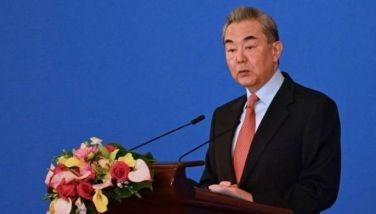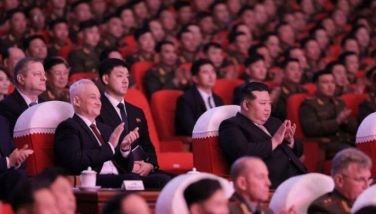News Analysis: Asia, US offer rays of sunshine amid global economic shadows
WASHINGTON (Xinhua) - The United States and Asia are two rare rays of sunshine in an otherwise cloudy global economic landscape, as most other economies are still seeing lackluster growth years after the worst downturn in decades.
That was the consensus as the International Monetary Fund (IMF) and World Bank wrapped up their annual fall meetings.
"It's very definitely true that the fundamentals of growth remain much stronger in Asia," compared to many other regions, Barry Bosworth, a senior fellow at Brookings Institution, a think tank, told Xinhua.
Indeed, the region is expected to grow around 5.5 percent in 2014 to 2015, IMF Asia and Pacific Director Changyong Rhee told reporters during the fund's annual meetings.
"Asia remains the main engine of global growth, albeit at a slower pace than a few years ago," Rhee said.
Support for the Asia-Pacific's exports from the strong momentum in the United States has been one factor contributing to the region's solid numbers, as has strong domestic demand propelled by low interest rates and robust credit growth, he added.
CHINA SLOWING BUT GROWTH STILL HIGH
In perhaps the biggest China news the IMF has announced in years, the fund billed the Asian giant's economy as the world's biggest in terms of purchasing power parity (PPP), but IMF officials also cautioned that the measurement is merely one of many indicators to determine the size of a nation's economy.
China, the largest economy in Asia, will see growth slow to 7.2 percent in 2015, down from 7.4 percent this year and 7.7 percent in 2013, according to IMF numbers released this week.
Despite the slide, Chinese growth still tops most other countries, and it is only natural for a developing economy to slow its breakneck speed of growth after years of dramatic gains that have lifted hundreds of millions of people into the middle class.
Bosworth said there is some concern that the shift away from dependence on exports, or "re-balancing" in economists' parlance, has been going slowly. One reason is that Chinese consumers are still not spending enough to prompt such a shift, as many families and individuals continue to sock away large sums for their children's education and their own retirement.
In response to a question from Xinhua, World Bank President Jim Yong Kim said China is "engaged" in the process of transition, adding that such a sea change does not come overnight.
INDIA AND THAILAND
In India, growth is forecast to rise to 5.6 percent in 2014, accelerating further to 6.4 percent in 2015, helped by lower uncertainty and rising business confidence, the IMF reported.
"The outlook for India looks bright with a new Modi government," American Enterprise Institute resident fellow Desmond Lachman told Xinhua, referring to the recent election of Prime Minister Narendra Modi, a pro-business reformer who supporters hope will bring a return to rapid growth on the sub-continent.
Southeast Asian economies will grow at a pace slightly under 5 percent in 2014, accelerating to 5.5 percent next year as global trade recovers and domestic demand rebounds.
Thailand, Southeast Asia's No. 2 economy, has undergone much political turmoil over the past year, marked by large street protests followed by a coup.
While foreign investors there have for decades stuck it out despite multiple political crises, Bosworth said Thailand can no longer rest on its laurels and assume it will always be a favorite destination for foreign investors, as other countries are coming up at a rapid clip.
Many Japanese auto companies, for example, remain in Thailand but are diversifying to Indonesia, he added.
"I think Thailand should worry that it now lives in a new world in which there're a lot of other countries that are competitors," Bosworth said, adding that cost-effective labor is now found in many other countries that are also attractive to foreign investors.
For Asia as a whole, some risks have increased, such as what Rhee called "persistent sluggishness" in Japan, as growth in the island nation is projected to be 0.9 percent this year after a flaccid first half.
US MOVING AHEAD, BUT MILLIONS STILL JOBLESS
Meanwhile, the Untied States stands as the other global bright spot, with the economy leaping ahead as the euro zone stumbles. The IMF earlier this week upgraded US growth figures after what the organization called a temporary setback earlier this year.
IMF economists called US jobs growth strong, as September's jobs report showed that unemployment sank to a six-year low, and noted that the housing market is recovering.
Still, other economists contend the unemployment report is deceiving, as millions have quit the job hunt out of sheer frustration. With the jobless rate counting only those actively seeking work, a more telling figure is the labor force participation rate, which measures the percentage of the population that is employed. That stands at a low not seen since 1978.
Many argue that when all these factors are tallied, they do not add up to a strong US economy, and experts outside the IMF foresee no robust growth spurts on the horizon.
- Latest
- Trending






























